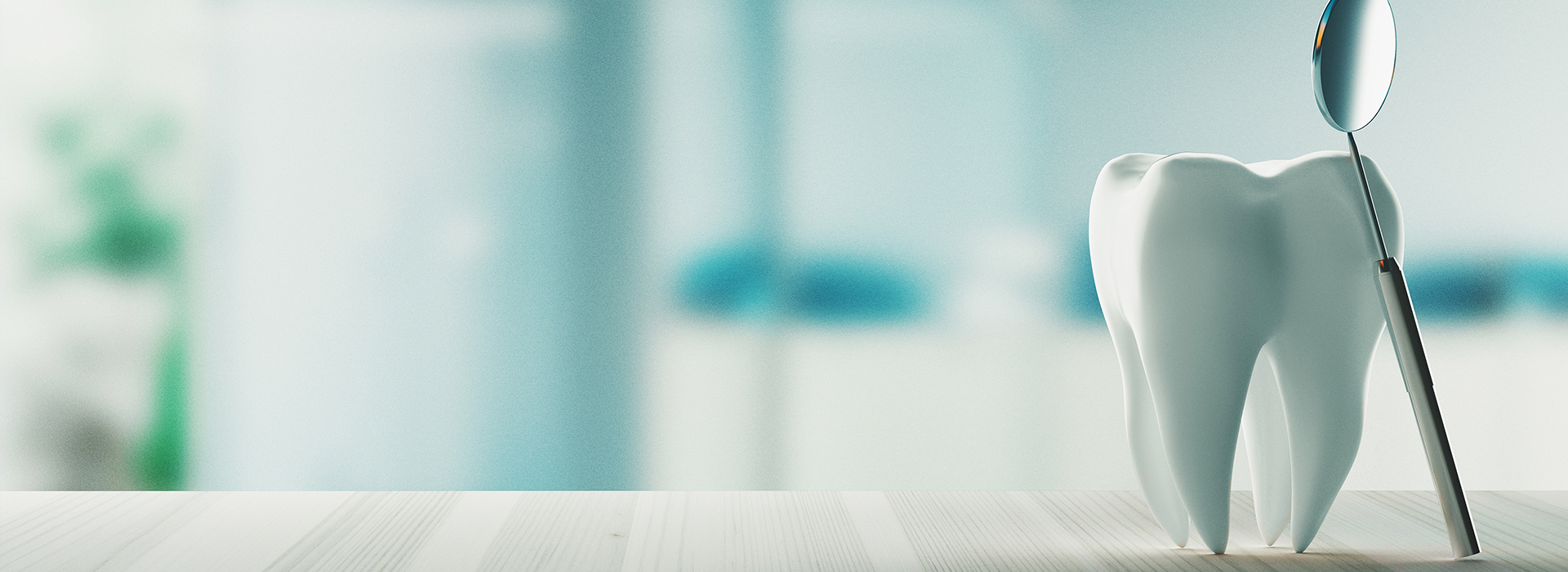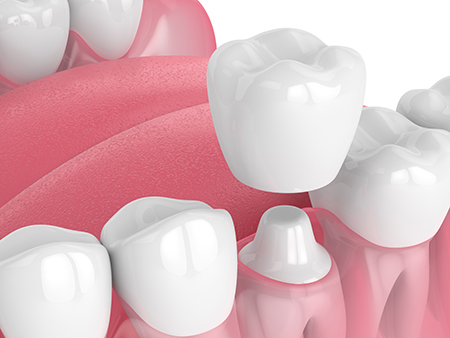
At the office of Saugeen Shores Family Dentistry, we focus on practical solutions that restore both the look and the function of damaged teeth. Our team combines modern materials with careful treatment planning so each crown becomes a lasting part of a patient’s smile—not just a quick fix. We aim to deliver results that feel natural, perform reliably, and fit comfortably into everyday life.
Teeth face a lot of wear over the years: decay, large fillings, trauma, and the cumulative effects of grinding or clenching can all leave a tooth weakened. When a conventional filling won’t provide enough support, a full-coverage restoration is often the safer route. Ceramic crowns reinforce the remaining tooth structure while restoring chewing function and surface anatomy.
Advances in dental ceramics now make it possible to replace metal-based crowns with metal-free options that closely mimic natural enamel. These materials are engineered for strength, translucency, and long-term stability, so patients no longer need to compromise between durability and appearance.
Throughout treatment, patient comfort and predictable outcomes remain the priority. We tailor every step to individual needs—matching shade and shape, preserving healthy tooth where possible, and choosing materials that suit the location and demands placed on the tooth.
Deciding whether a crown is the appropriate restoration starts with a careful assessment of how much tooth remains and how the tooth functions within the bite. Teeth with large areas of decay, fractured cusps, or extensive previous restorations often lack the structural integrity necessary to support chewing forces. In those cases, a crown encapsulates and protects what is left of the tooth.
Root canal therapy frequently leaves teeth more brittle than before; a crown over a root-treated tooth helps prevent future fractures by redistributing stress across the remaining tooth. Similarly, when a tooth serves as an abutment for a bridge or supports a dental implant, a crown provides the predictable shape and strength required for those restorative roles.
A crown is also a reliable cosmetic option when a tooth is badly discolored, misshapen, or undersized and veneers are not suitable. Because crowns cover the entire visible surface of a tooth, they allow for more dramatic corrections in form and shade while simultaneously restoring function.

All-ceramic crowns deliver a level of esthetics that closely mirrors natural tooth structure. Their optical properties—how they reflect and transmit light—produce lifelike translucency and depth, which is particularly important for front teeth. This makes ceramic crowns an ideal choice when appearance is a primary concern.
Beyond looks, contemporary ceramics are biocompatible and tooth-friendly. They are less likely to contribute to soft tissue irritation, and because they contain no metal, they eliminate visible dark lines at the gumline that sometimes appear with metal-based restorations. For patients with metal sensitivities, a metal-free crown can be the safer option.
Durability has also improved substantially. Newer ceramic formulations combine strength and toughness that suit both anterior and posterior applications. With proper design and fitting, ceramic crowns resist staining and wear, maintaining their appearance over time while protecting the underlying tooth.

Not all ceramic materials behave the same under stress or in varied lighting conditions, so material selection is a key part of treatment planning. For front teeth where translucency and fine cosmetic detail matter most, glass-ceramics such as lithium disilicate can reproduce subtle enamel characteristics while still offering reliable strength.
For molars and other teeth that endure heavy chewing forces, monolithic zirconia or high-strength translucent zirconia can provide exceptional fracture resistance. Advances in shading and polishing have made these strong ceramics far more aesthetic than earlier generations, making them a practical choice for many posterior restorations.
Your dentist will weigh several factors—occlusal load, location in the mouth, the amount of remaining tooth, and the desired esthetic outcome—before recommending a specific ceramic. The goal is to select a material that balances longevity with a natural appearance so the final crown integrates seamlessly with the rest of your smile.
The crown process begins with a diagnostic visit in which the tooth is evaluated and photographs, X-rays, or digital scans are taken. Careful planning ensures the chosen design protects tooth structure while restoring proper occlusion and aesthetics. When ready to proceed, the tooth is gently shaped to create space for the crown while preserving as much healthy tissue as possible.
Impressions are taken either with a digital scanner or traditional impression materials; these records guide the laboratory or in-office milling system that fabricates the crown. A temporary restoration may be placed to protect the tooth and maintain appearance while the final crown is being made. At the final appointment, the crown is tried in, adjusted for comfort and bite, and permanently bonded or cemented.
After placement, routine oral hygiene and regular dental visits help protect your investment. Ceramic crowns are resilient, but they are not indestructible—avoiding hard, impact-prone habits and addressing any changes in bite early can prolong the service life of the restoration.

Every crown begins with a conversation about goals and practical needs. We take time to understand what you want your restored tooth to do—whether that’s blend invisibly with surrounding teeth, withstand heavy chewing, or serve as a foundation for other restorative work. This collaborative approach leads to treatment plans that are predictable and tailored to each patient.
Our treatment standards include precise shade matching, occlusal analysis, and material selection suited to the individual. We also plan follow-up care to monitor the restoration, checking for fit, gum health, and any signs of wear. If adjustments are needed, we address them promptly to maintain comfort and function.
When more complex restorative needs arise—such as when multiple crowns are involved or when a crown must interface with an implant—careful sequencing and clear communication with dental labs ensure consistent results. The focus is always on achieving an outcome that looks natural and performs reliably for years to come.
Our team uses contemporary materials and clinical protocols designed to deliver durable, esthetic outcomes. Attention to detail—from initial assessment and digital planning to precision finishing and careful cementation—helps ensure crowns integrate well with your bite and surrounding teeth. We combine clinical expertise with the latest technology to reduce guesswork and improve predictability.
Saugeen Shores Family Dentistry emphasizes patient comfort and clear communication at every step. We explain material options, outline treatment sequences, and answer questions so you can make an informed choice. Our goal is to restore your tooth in a way that respects both function and appearance while minimizing surprises during treatment.
If you’re considering a ceramic crown or want to explore which restorative option best suits an injured or heavily restored tooth, please contact us for more information. We’re happy to talk through the possibilities and help you find a plan that meets your needs.
While a dental filling is designed to replace a portion of a decayed or damaged tooth, a dental crown offers full coverage to restore the tooth’s entire outer surface. A well-fitting dental crown not only protects and strengthens the underlying tooth structure, but it also restores the tooth’s appearance and function.
The procedure for getting an all-ceramic crown is much like the procedure for getting any other type of crown. In all cases, the tooth needs to be prepared, an impression taken, and a permanent crown cemented into place. A single all-ceramic crown can typically be fabricated over the course of two visits. However, with CAD/CAM technology, a same-day crown can be fabricated from start to finish in a single visit. With the first approach, a temporary crown is typically worn until the second visit, when the permanent restoration is placed. As with every treatment plan, our office will explain your best options in care.
As the name implies, a temporary crown is only worn for a short time until the permanent crown is placed. A temporary crown is typically fabricated from durable tooth-colored dental acrylics. While designed to protect the underlying tooth between appointments, and until your new permanent crown gets placed, a temporary crown is also fabricated to look like a natural tooth and maintain the look of your smile.
While you should feel better having an attractive and functional tooth to restore your smile, your tooth may feel a little sensitive following treatment. This initial sensitivity will subside. We take great care to make sure your new restoration looks great, fits well, and your bite is perfect. However, we’re always happy to make any minor adjustments to ensure your comfort.
With some exceptions, teeth with root canal procedures are typically restored and protected from further damage with a full-coverage crown. Based on what’s best for your smile, our office will recommend the most appropriate restoration to maintain the health and longevity of your tooth following a root canal procedure.
A dental crown is a long-term restoration that, if properly cared for, can serve you well for many years to come. Once your new crown is placed, it requires the same brushing, flossing, and periodic checkups as your natural teeth. Avoid biting your fingernails and chewing on hard or sticky objects such as ice, pencils, or taffy, which can damage or loosen your crown. Remember, clenching and grinding your teeth puts excessive pressure on both natural teeth and dental restorations. Unless treated, this habit can compromise the longevity and integrity of your dental work, including crowns.
Although your new all-ceramic crown restores the tooth's strength, form, and function, you can still develop dental disease in the absence of proper care. To prevent gum disease and tooth decay, it’s essential to brush and floss as instructed and see our office for routine checkups, cleanings, and care.
How long a dental crown lasts depends on various factors, including your level of oral care, diet, and oral habits. While the standard answer is that dental crowns can last anywhere from 5 to 15 years, existing literature confirms that most dental crowns remain in place at 15 to 20 years.
At the office of Saugeen Shores Family Dentistry, we strive to provide the highest quality of care to address all your dental needs. Once we’ve had the opportunity to examine your smile, we can give you a clear picture of any dental issues that are present, along with a quote for how much treatment will be. The cost of dental crowns can vary a little, depending on the type of crown and its location. Our goals are to provide the highest quality of care and help patients begin treatment without additional financial stress or delay. We’re always happy to answer all your questions on dental insurance coverage, available financing, and payment plans.
Coverage for all-ceramic crowns depends on your dental insurance plan. Today, many dental plans provide some level of coverage for all-ceramic crowns. At the office of Saugeen Shores Family Dentistry, we work with patients to optimize their dental benefits and get the care they need to maintain healthy and beautiful smiles!
Ceramic crowns are full-coverage restorations made entirely from dental ceramics that replicate the shape, color, and translucency of a natural tooth. Unlike crowns that incorporate a metal substructure, all-ceramic crowns are metal-free and designed to blend seamlessly with surrounding teeth. Advances in ceramic materials have improved their strength and wear resistance so they can be used in many parts of the mouth while maintaining superior aesthetics.
The main distinctions between ceramic and metal-ceramic crowns are aesthetics and tissue compatibility. Ceramic crowns transmit and reflect light similarly to natural enamel, producing a lifelike appearance, while metal-based crowns can show a dark margin at the gumline over time. In addition, ceramic materials are an excellent option for patients with sensitivities to metal.
A dentist will typically recommend a crown when a tooth has lost too much structure for a filling to restore reliably, such as after extensive decay, large or broken fillings, or trauma. Crowns provide full coverage that reinforces the remaining tooth, protecting it from fracture and restoring normal chewing function. They are also commonly advised after root canal therapy, when a tooth needs additional support, or when improving the shape and color of a seriously discolored or misshapen tooth.
Decision-making also considers the tooth's location and the forces it endures during chewing. For front teeth the aesthetic outcome is paramount, so highly translucent ceramic options are often chosen, while posterior teeth may require ceramics with enhanced strength. Your dentist will explain why a crown is the most predictable solution for long-term function and appearance in your specific case.
All-ceramic crowns offer excellent aesthetic results because they mimic the light-reflecting properties of natural enamel, delivering lifelike translucency and color matching. They are metal-free, which eliminates the risk of a visible metal margin at the gumline and reduces irritation for patients with metal sensitivities. Modern ceramics are also stain resistant and maintain their appearance well over time.
Beyond cosmetics, ceramic crowns can require less tooth reduction with some material choices and are gentle on surrounding soft tissues. Many ceramic systems combine strength and durability comparable to traditional metal-ceramic restorations, making them suitable for a wide range of clinical situations. Their biocompatibility and natural appearance make them a preferred option for patients prioritizing both function and aesthetics.
Choosing the right ceramic material depends on the tooth's position, the amount of biting force it will experience, and the aesthetic goals for the restoration. For front teeth where appearance is critical, materials with high translucency such as lithium disilicate or certain high-translucent porcelains may be recommended. For back teeth that require greater strength, monolithic zirconia or reinforced ceramic formulations are often better suited.
Your dentist will evaluate factors such as the existing tooth structure, any underlying restorations or implants, and your bite to select the most appropriate material. The chosen material balances durability, minimal tooth preparation, and visual harmony with neighboring teeth to achieve an outcome that meets both functional and cosmetic needs.
The treatment process usually begins with a clinical exam, x-rays if needed, and a discussion of aesthetic and functional goals to develop a personalized plan. During the first appointment the tooth is prepared by removing damaged or weak structure, impressions or digital scans are taken, and a temporary crown may be placed to protect the tooth while the final restoration is fabricated. The lab or digital milling process produces the final ceramic crown to the specified shade and contour.
At the follow-up visit the temporary is removed, the fit and appearance of the new crown are verified, and the restoration is permanently cemented or bonded in place. Your dentist will check your bite and make any fine adjustments to ensure comfortable function. At Saugeen Shores Family Dentistry our team emphasizes careful planning and precise fit to promote predictable long-term results.
The lifespan of a ceramic crown varies with material choice, oral hygiene, bite forces, and regular dental care, but many ceramic crowns last well over a decade with proper maintenance. Good oral hygiene—brushing twice daily with a soft brush, flossing daily, and maintaining routine dental checkups and cleanings—helps protect both the crown and the supporting tooth. Avoiding hard or excessively sticky foods that could place undue stress on the restoration will also reduce the risk of chipping or fracture.
Regular dental visits let your dentist monitor the crown and the health of surrounding tissues, addressing small issues before they become larger problems. If you clench or grind your teeth, your dentist may recommend a nightguard to safeguard crowns from excessive wear. Promptly reporting sensitivity, looseness, or unusual symptoms helps preserve the restoration and underlying tooth.
Yes, ceramic crowns are an excellent choice for patients with known metal sensitivities because they are completely metal-free and biocompatible. Metal-free ceramics reduce the risk of allergic reactions and eliminate concerns about metal corrosion or galvanic currents that can occur with dissimilar metals in the mouth. This makes them a preferred option for patients seeking highly aesthetic restorations without metal components.
Your dentist will review your medical and dental history to confirm ceramic suitability and may recommend specific ceramic types based on strength and translucency needs. If there is a history of unusual reactions to dental materials, allergy testing or consultation with a specialist can be considered prior to treatment.
Ceramic crowns are commonly used as the visible restoration on dental implants and as individual crowns supporting dental bridges. When used with implants, ceramic crowns are secured to implant abutments and are designed to mimic natural dentition while providing proper function. For bridges, crowns on the abutment teeth provide full coverage and support the pontic (artificial tooth) that replaces the missing tooth or teeth.
Selecting the correct ceramic type and connection method is essential to achieve strength and longevity in implant-supported or bridge restorations. Your dentist will plan the restorative approach to ensure proper occlusion, soft tissue health, and an aesthetic match with adjacent teeth for a seamless result.
Common risks with ceramic crowns include sensitivity after placement, marginal leakage if the crown fit is imperfect, and the potential for chipping or fracture under excessive force. While modern ceramics are strong, no material is immune to damage from trauma or habitual grinding, so protective measures such as nightguards may be recommended. Poor oral hygiene or untreated decay at the crown margin can compromise the underlying tooth and lead to further treatment.
Careful planning, precise preparation, and accurate adhesion or cementation reduce many risks and help ensure predictable outcomes. Routine dental examinations allow early detection and management of issues such as minor chips, marginal staining, or gum changes to preserve both the crown and the natural tooth structure.
Preparation for a ceramic crown begins with a consultation and any necessary diagnostic imaging to determine the tooth's condition and plan the restoration. On the day of treatment you can expect local anesthesia to keep you comfortable while the tooth is shaped and impressions or digital scans are taken; a temporary crown protects the tooth until the final restoration is ready. Recovery from the appointment is typically quick, with sensitivity or mild soreness resolving within a few days.
After the crown is placed you should avoid very hard foods for a short period and follow any specific home-care instructions provided by your dentist. Maintain regular dental visits so your dentist can assess the crown's fit, your bite, and the health of surrounding tissues. If you experience persistent pain, a loose crown, or other concerns, contact your dental office for prompt evaluation.
Saugeen Shores Family Dentistry provides care in a modern facility that emphasizes up-to-date materials and careful treatment planning to achieve both functional and aesthetic outcomes. Our team focuses on individualized treatment recommendations, considering each patient's oral health, smile goals, and the longevity of the chosen restoration. We combine clinical experience with attention to detail to ensure ceramic crowns are well matched in color, contour, and fit.
When you choose our practice in Port Elgin you can expect a thorough consultation, clear explanations of material options, and a step-by-step plan tailored to your needs. We prioritize patient comfort and precise restorative techniques to help you enjoy a natural-looking, durable result that supports long-term oral health.
Quick Links